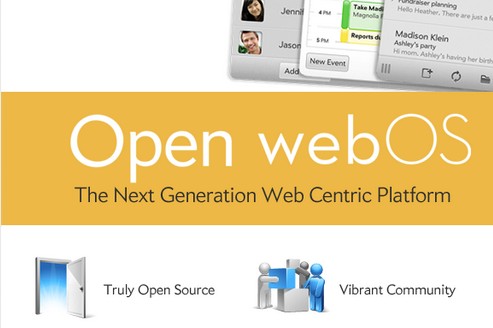Open webOS Profession Edition - commercial version of Open webOS?

When HP decided to promote webOS as an open source operating system, many wondered how the company was going to make money on it. There is no doubt that Hewlett-Packard has something to pay the bills, but given the current financial situation, it is unlikely to spend money on projects with a small potential profit. Of course, an open source operating system alone cannot attract any cash flows.
Having written off a $ 3.3 billion loss from webOS, HP nevertheless continued financing webOS, creating a quasi-independent company Gram for its promotion. However, it was not clear what Gram was going to make money on. The hint was received after opening the source.Open webOS 1.0 at the end of last month: Open webOS does not have any cloud services (App Catalog, data backup service, etc.) that were present in Palm / HP webOS. According to HP, these services will be provided through business agreements with partners and manufacturers. But this is only one part of the solution to the Gram puzzle.
As it turned out, the “locomotive” of the platform should be the professional version of webOS Professional Edition with a usage model similar to Red Hat. Fedora, the popular open source Linux-based operating system, is free for everyone. But as soon as you decide to use it in business processes, you have to subscribe to Red Hat Enterprise Linux to get support and additional services. This business model [distributing the base product for free and selling vital services] allowed Red Hat to generate revenue of $ 1.13 billion in 2012.
If so, can Open WebOS PE be a source of income for Gram? As senior vice president of HP Martin Risau wrote in a letter to employees of the already disbanded webOS GBU division, “we expect ODM [original equipment manufacturers] to pay attention to Open webOS someday and come to Gram for a professional version.”
Time will tell whether such a strategy will be viable. Although fans continue to actively develop webOS, this does not mean there is consumer demand for it. Open webOS PE will need to be more than just Open webOS with integrated cloud services. The system should be seriously improved in terms of consumer opportunities. Gram hopes to attract ODM manufacturers by analogy with Android from Google and, possibly, Microsoft's Windows Phone, where serious basic functionality has already been created, and ODM can only configure the OS (at least for Android) to users preferences.
Of course, it will take some time before we see Open webOS PE and products based on it. As Risau wrote: “This is only the first step in a long-term strategy.”
Thanks for the infowebosNation and Open webOS Forums .
